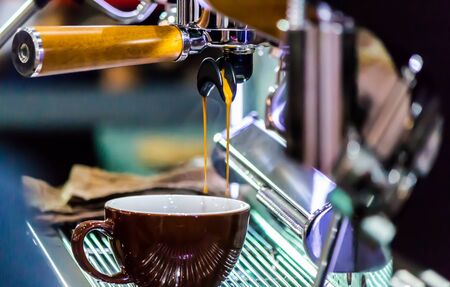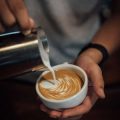1. The Importance of Coffee-to-Water Ratio
If you’re on a quest for the perfect cup of coffee, dialing in your coffee-to-water ratio is non-negotiable. This fundamental brewing variable determines everything from the strength of your brew to the clarity of its flavors and the completeness of its extraction. Get it right, and you unlock the full potential of your beans—nuanced notes, balanced acidity, and satisfying mouthfeel. Get it wrong, and you risk ending up with a cup that’s either weak and watery or harshly over-extracted. In American coffee culture, where personalization is king and quality matters, understanding this ratio helps you consistently craft coffee that rivals your favorite café. Whether you favor a bold French press or a clean pour-over, mastering your coffee-to-water balance is the first step toward elevating your daily ritual.
2. Understanding the Golden Ratio
When it comes to brewing that perfect cup of coffee, nailing the right coffee-to-water ratio is key. The “Golden Ratio” is a popular starting point for home baristas and pros alike, typically cited as 1:16—meaning one part coffee to sixteen parts water. This time-tested guideline isn’t just an arbitrary number; it’s a foundation for achieving a balanced extraction, ensuring your cup isn’t too weak or overpoweringly strong. While personal taste will always play a role, understanding these ratios gives you consistency and helps fine-tune your daily brew.
| Coffee (grams) | Water (grams / ml) | Ratio | Flavor Profile |
|---|---|---|---|
| 15 | 240 | 1:16 | Balanced, standard American cup |
| 18 | 288 | 1:16 | Smooth, well-rounded body |
| 20 | 320 | 1:16 | Full-bodied but not overpowering |
| 15 | 225 | 1:15 | Bolder, richer flavor |
| 15 | 255 | 1:17 | Lighter, more delicate taste |
The Golden Ratio serves as your launchpad—its simple enough for beginners yet flexible enough for coffee geeks who want to tweak their technique. Think of it as the baseline for any brew method, whether youre using a drip machine, pour-over, or French press. Start with the classic 1:16 ratio, then adjust up or down based on your personal preferences and the type of beans you’re using. By mastering this foundational guideline, you gain control over strength, clarity, and overall satisfaction in every mug.

3. Favorite Brewing Methods and Their Ideal Ratios
When it comes to dialing in the perfect cup, American coffee lovers often turn to a handful of classic brewing methods—each with its own optimal coffee-to-water ratio. Understanding these golden ratios is essential for getting the best flavor from your beans, no matter which style of brewing you prefer.
Drip Coffee Makers
Drip machines are a staple in many U.S. kitchens, prized for their convenience and consistency. The go-to ratio here is typically 1:16—that’s one part coffee to sixteen parts water. For example, using about 2 tablespoons (roughly 10 grams) of ground coffee per 6-ounce cup yields a balanced, crowd-pleasing brew that’s neither too strong nor too weak.
Pour-Over
If you’re after more control over extraction, pour-over methods like the Hario V60 or Chemex are top choices among American homebrewers. The sweet spot for pour-over sits at 1:15 to 1:17, depending on taste preferences. That means 20 grams of coffee to 300–340 grams (about 10–12 ounces) of water makes a bright, nuanced cup that highlights the bean’s origin flavors.
French Press
The French press is a favorite for those who love rich, full-bodied coffee. Here, a ratio of 1:12 (about 2 tablespoons of coarse grounds per 6 ounces of water) provides that signature boldness without going overboard on strength or bitterness. For larger batches, this scales well—just keep the proportion consistent for reliable results.
Cold Brew
No summer in America is complete without cold brew. For this method, the ideal starting ratio is much stronger: 1:8. Mix 1 cup of coarsely ground coffee with 8 cups of cold water and steep overnight; you’ll end up with a concentrate that can be diluted to taste with ice or milk. This approach delivers a smooth, low-acid beverage perfect for hot days or prepping ahead for busy weeks.
Dialing It In
No matter your favorite brewing method, experimenting within these recommended ratios will help you find your personal sweet spot. Start with the golden rules, then adjust grind size, brew time, and ratios until every sip matches your expectations. Consistency is key—so grab a kitchen scale and record your wins for reliably great coffee every morning.
4. Tools of the Trade: Scales, Scoops, and Measuring Tips
Getting your coffee-to-water ratio just right starts with using the right tools. Precision is key—after all, even small measurement errors can throw off the flavor of your brew. Here’s a breakdown of essential equipment and some handy measurement hacks that American home brewers can easily implement.
Recommended Equipment for Accurate Measurements
| Tool | Best For | Pros | Cons |
|---|---|---|---|
| Coffee Scale (Digital) | Weighing both coffee and water | High accuracy, consistent results, easy to use with tare function | Requires batteries, may take up counter space |
| Coffee Scoop (Standard 2 Tbsp.) | Quick measuring without a scale | Convenient, no electronics needed, easy to clean | Less precise—coffee beans’ density varies by roast and grind size |
| Measuring Cup (Liquid Ounces/Milliliters) | Measuring water volume | Easy to find in every kitchen, straightforward for beginners | Not as precise as weighing water by grams |
| Spoon/Tablespoon Set | Small batch brewing or adjustments | No special equipment required, good for quick fixes | Easily leads to inconsistency over time |
Practical Measurement Hacks for Everyday Brewing
- No Scale? No Problem. If you don’t have a scale, remember that one standard U.S. coffee scoop equals about two tablespoons or roughly 10-12 grams of coffee grounds. For most American brewers, a good starting point is one scoop per 6 ounces of water.
- Cup Markings Matter. Many drip coffee makers in the U.S. use “cups” that are actually only 5-6 ounces. Always check your machine’s manual or markings so you’re not under- or over-diluting your brew.
- Mason Jar Hack. A standard pint mason jar holds about 16 fluid ounces—perfect for measuring out two “American cups” of water if you’re brewing without a measuring cup.
- Tare Your Scale. If you’re using a digital scale, always hit the tare button after placing your mug or carafe on it before adding ingredients. This ensures you’re measuring only the coffee or water weight—not the container.
- Brew Ratio Memory Tip: For most pour-over and drip methods, stick to the “Golden Ratio”: about 1:16 (one part coffee to sixteen parts water by weight). That’s about 22 grams of coffee for every 350 grams (12 oz) of water—a typical American mug size!
Your Measurement Routine Matters
The bottom line? Investing in a simple kitchen scale can transform your morning ritual from guesswork into an exact science—and consistently great-tasting coffee is worth those extra few seconds. But even if you’re working with scoops and spoons, being mindful and consistent with your measurements will bring you closer to that perfect cup every time.
5. Troubleshooting: Adjusting for Personal Taste
Even with the golden ratio as your starting point, every coffee lover knows that “just right” is highly personal. Factors like flavor preferences, coffee freshness, and roast type all play a role in dialing in your ideal brew. Here’s how to fine-tune your coffee-to-water ratio to create a cup that’s uniquely yours.
Tweak the Ratio for Flavor Preferences
If your coffee tastes too strong or bitter, try increasing the amount of water slightly or using less coffee per brew. If it feels weak or watery, up the coffee dose or reduce the water by an ounce at a time. Small changes—think increments of 1 gram of coffee or half an ounce of water—can make a noticeable difference without overpowering your palate.
Consider Coffee Freshness
Freshly roasted beans release more carbon dioxide and volatile compounds, which can impact extraction. If you’re brewing with ultra-fresh beans (less than a week from roasting), you might need to use a bit more coffee or let your grounds degas for a day or two before brewing. Stale beans? You may want to use a little less water to concentrate the flavors and compensate for lost aromatics.
Adjust for Roast Type
Light roasts tend to be denser and less soluble, meaning they often require slightly higher temperatures and a tad more coffee for full extraction. Dark roasts are more soluble and can taste overpowering if brewed too strong; try using less coffee or adding extra water to mellow out their robust flavors. Don’t be afraid to experiment—a scale and a notebook can help you track your tweaks until you hit that sweet spot.
Remember, the perfect brewing ratio is about personal satisfaction. Trust your taste buds and don’t hesitate to adjust your method based on what you love most in every cup.
6. Final Thoughts: Experimenting for Perfection
The journey to perfecting your coffee-to-water ratio isn’t a one-size-fits-all process—especially in America’s diverse coffee culture. While the golden rules offer a great starting point, true coffee aficionados know that experimenting is the key to unlocking your personal best brew. Don’t be afraid to adjust your ratios, try different grind sizes, or play with brewing times; each variable can dramatically change the flavor profile and mouthfeel of your cup.
One practical tip? Start keeping a dedicated coffee journal. Note down every tweak you make—from the type of beans and their roast level to the exact amount of water and coffee you use. Over time, these notes become an invaluable reference, helping you consistently recreate that perfect morning cup or innovate when you’re feeling adventurous.
In American kitchens from coast to coast, there’s no shame in a little trial and error. The most celebrated baristas didn’t master their craft overnight—they honed it through curiosity, patience, and meticulous note-keeping. So grab your favorite mug, fire up your brewer or pour-over kit, and start charting your own path to coffee perfection. Your ideal ratio is out there—you just have to experiment until you find it.


